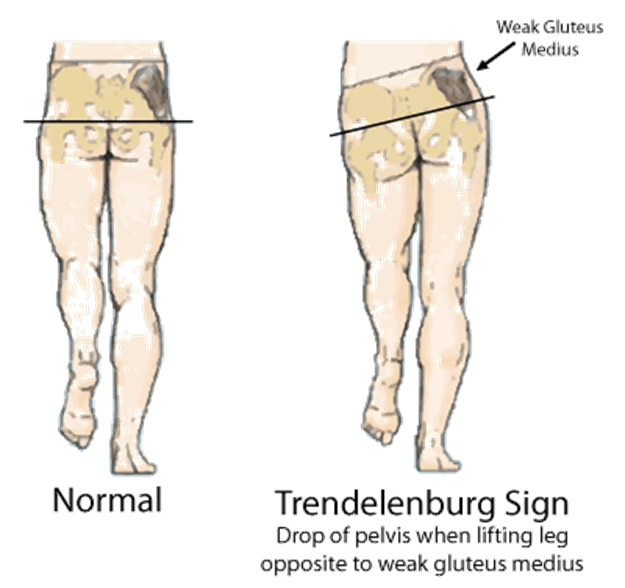Diabetes, dementia, Parkinson’s disease, stroke, and vitamin B deficiencies may cause neurological damage leading to what condition?
Aphasia
Traumatic brain injury (TBI)
Gait disturbances
Postprandial hypotension (PPH)
Fallophobia
The Correct Answer is C
Choice A reason: Aphasia is a language disorder that affects the ability to communicate, not the ability to walk or balance.
Choice B reason: Traumatic brain injury (TBI) is caused by external forces, such as a blow to the head, not by internal factors, such as diseases or deficiencies.
Choice C reason: Gait disturbances are problems with walking or balance that can result from neurological damage affecting the motor system.
Choice D reason: Postprandial hypotension (PPH) is a drop in blood pressure after eating that can cause dizziness or fainting, but it is not directly related to neurological damage.
Choice E reason: Fallophobia is a fear of falling or heights, not a condition caused by neurological damage.

Nursing Test Bank
Naxlex Comprehensive Predictor Exams
Related Questions
Correct Answer is D
Explanation
Choice A reason: Squamous cell carcinoma is a type of skin cancer that develops from the squamous cells that make up the outer layer of the skin. It usually appears as a scaly, red, or crusty patch or lump that may bleed or ulcerate. It is the second most common type of skin cancer, after basal cell carcinoma, but it is less common than melanoma.
Choice B reason: Actinic keratosis is a skin condition that causes rough, scaly, or crusty patches or spots on the skin that are usually caused by sun exposure. It is not a type of skin cancer, but it is considered a precancerous lesion, as it can sometimes develop into squamous cell carcinoma if left untreated.
Choice C reason: Kaposi sarcoma is a rare type of skin cancer that causes purple, red, or brown patches or nodules on the skin or mucous membranes. It is caused by a virus called human herpesvirus 8 (HHV-8), and it mainly affects people with weakened immune systems, such as those with HIV/AIDS or organ transplants.
Choice D reason: Melanoma is a type of skin cancer that develops from the melanocytes, the cells that produce the pigment melanin that gives the skin its color. It usually appears as a mole or a new or changing spot on the skin that may have an irregular shape, color, or border. It is the most common type of skin cancer, and also the most serious, as it can spread to other parts of the body if not detected and treated early.
Correct Answer is ["A","C","D","E"]
Explanation
Choice A reason: Cognitive disorders are conditions that affect the mental functions, such as memory, reasoning, judgment, or orientation. Cognitive disorders can increase the risk of falls by impairing the awareness, attention, or decision-making of the client.
Choice B reason: Antibiotics are not a factor that requires particular attention when assessing a client who has a history of falls. Antibiotics are medications that treat bacterial infections, and they do not directly affect the risk of falls. However, some antibiotics may have side effects, such as dizziness, nausea, or diarrhea, that can indirectly increase the risk of falls.
Choice C reason: Orthostatic hypotension is a condition where the blood pressure drops significantly when changing position, such as standing up from sitting or lying down. Orthostatic hypotension can cause symptoms, such as lightheadedness, fainting, or blurred vision, that can increase the risk of falls.
Choice D reason: Vision is the sense of sight that allows the perception of the environment and the detection of potential hazards. Vision can decline with age or due to various eye diseases or injuries. Poor vision can increase the risk of falls by affecting the depth perception, contrast sensitivity, or visual field of the client.
Choice E reason: Balance is the ability to maintain the body's center of gravity over its base of support. Balance can be affected by various factors, such as inner ear problems, muscle weakness, joint stiffness, or medication use. Poor balance can increase the risk of falls by impairing the stability and coordination of the client.
Whether you are a student looking to ace your exams or a practicing nurse seeking to enhance your expertise , our nursing education contents will empower you with the confidence and competence to make a difference in the lives of patients and become a respected leader in the healthcare field.
Visit Naxlex, invest in your future and unlock endless possibilities with our unparalleled nursing education contents today
Report Wrong Answer on the Current Question
Do you disagree with the answer? If yes, what is your expected answer? Explain.
Kindly be descriptive with the issue you are facing.
